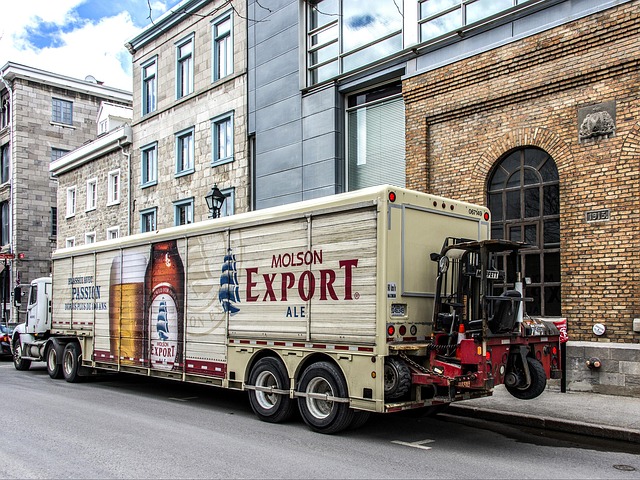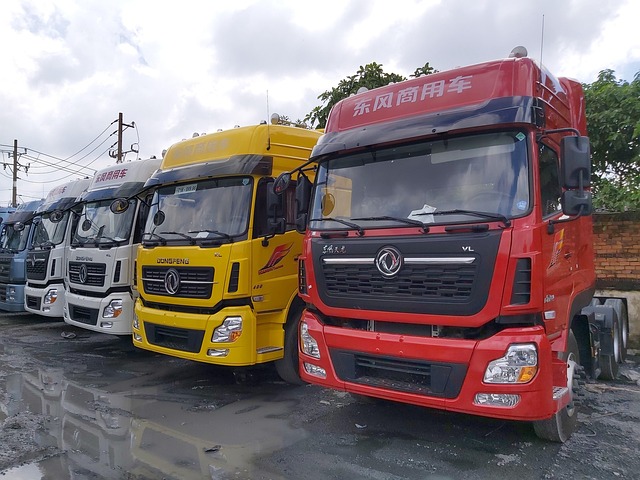Looking to register your car in California? This comprehensive guide walks you through every step, from understanding essential requirements to securing your vehicle’s unique VIN for verification. We’ll detail the necessary documents, help you navigate a vehicle history report, and show how to choose between in-person or online registration at the DMV. Get ready to hit the road legally and confidently!
- Understand the Requirements for Car Registration in California
- Gather Necessary Documents for VIN Verification
- Perform a Vehicle History Report and Check for Any Issues
- Visit a California Department of Motor Vehicles (DMV) Office or Use Online Services
- Complete the Registration Process and Receive Your Plate
Understand the Requirements for Car Registration in California

Before you begin the registration process, it’s crucial to understand the requirements for car registration in California. The state Department of Motor Vehicles (DMV) mandates several key steps to ensure a smooth and legitimate registration. One vital aspect is the verification of your vehicle’s Vehicle Identification Number (VIN). This unique 17-character code serves as a fingerprint for your car, facilitating its identification and history tracking. A reliable method for VIN verification involves using a mobile vin verifier or conducting a mobile vin inspection—a service that checks against national and local databases to confirm the vehicle’s authenticity and past ownership.
Additionally, you’ll need to provide essential documentation, such as proof of insurance, a valid driver’s license, and the appropriate registration fees. The DMV offers both in-person and online registration options, although some methods may require additional steps or documents. Always refer to the official California DMV website for the most up-to-date information and guidelines to ensure your car registration meets all legal standards.
Gather Necessary Documents for VIN Verification

Before you begin the registration process in California, ensure you have all the necessary documents for VIN (Vehicle Identification Number) verification. This includes your vehicle’s title, which proves ownership, and a valid registration from the state where the car is currently registered. You’ll also need to provide proof of insurance, often in the form of an insurance card or policy number.
For a seamless process, consider having a mobile VIN inspection done by a professional. This service allows you to verify your vehicle’s history and ensure it meets California’s requirements before registering. It’s particularly useful if you’re buying a used car, as it can help uncover any potential issues or hidden costs associated with the vehicle.
Perform a Vehicle History Report and Check for Any Issues

Before registering your car in California, it’s crucial to perform a Vehicle History Report (VHR) using the unique 17-digit Vehicle Identification Number (VIN). This step is essential as it helps uncover any hidden issues or potential fraud associated with the vehicle. A VHR provides valuable insights into the car’s past, including ownership history, accident records, and maintenance records.
By utilizing a service like a mobile VIN inspection or a trusted vin inspector, you can ensure that the vehicle you’re planning to register is safe and legal. These professionals conduct a thorough VIN verification process, cross-referencing data from various sources to provide an accurate report. This step will help you avoid unexpected problems down the line, making the registration process smoother and ensuring your investment is protected.
Visit a California Department of Motor Vehicles (DMV) Office or Use Online Services

When registering your car in California, one of the essential steps is to ensure your vehicle’s history is clean and accurate. You can start this process by visiting a local California Department of Motor Vehicles (DMV) office or utilizing their online services. At the DMV, you’ll need to provide key documents and undergo a VIN verification process to confirm the vehicle’s identity and condition. This includes checking for any outstanding issues like theft, accidents, or outstanding titles.
Using online services offers convenience, allowing you to submit applications, upload documents, and even schedule appointments. Some platforms even provide mobile VIN verification and inspection options, ensuring a seamless experience from the comfort of your home. These digital tools streamline the registration process, making it more efficient and user-friendly for California residents.
Complete the Registration Process and Receive Your Plate

After submitting all necessary documents and passing the vehicle inspection, the next step is to complete the registration process and receive your license plate. This typically involves a few straightforward steps. You’ll need to pay the required registration fees, which can be done online or at a California Department of Motor Vehicles (DMV) office. Once the payment is processed, you’ll be issued a registration card and your unique California license plate.
If you opt for a mobile vin verification service or choose to conduct a vin inspection yourself, ensure that the vehicle’s identification number (VIN) matches the information in the DMV system. This step is crucial for accurate record-keeping and ensures that your vehicle complies with all legal requirements before hitting the road.
Registering a car in California is a straightforward process that requires understanding specific requirements and gathering essential documents. By completing VIN verification, conducting a vehicle history report, and visiting a DMV office or utilizing online services, you can ensure a smooth registration experience. Remember to bring all necessary paperwork and follow the steps outlined in this guide to receive your plates promptly and drive legally on California’s roads.
